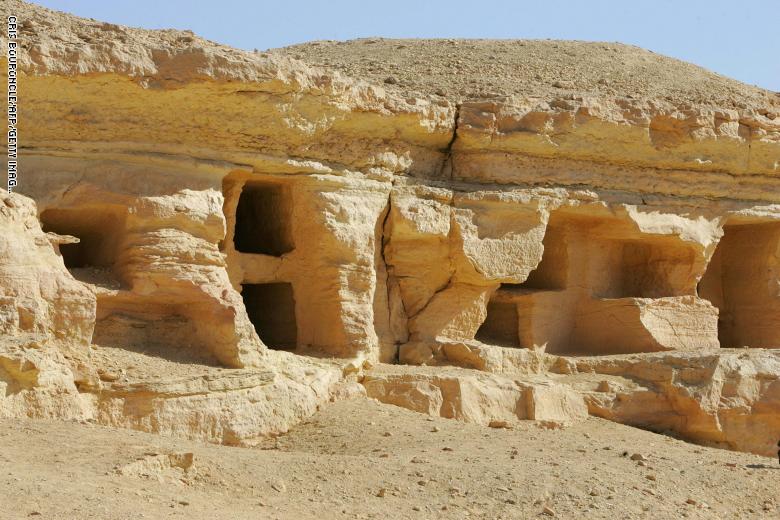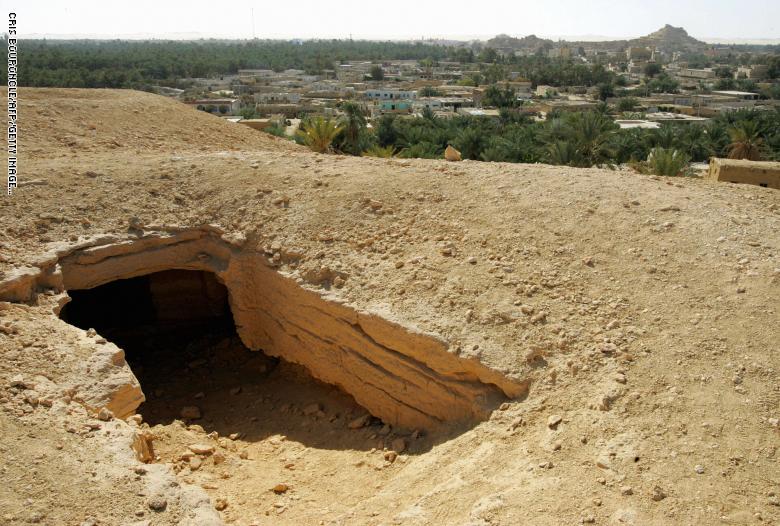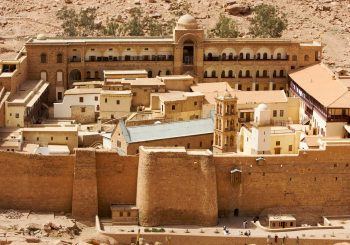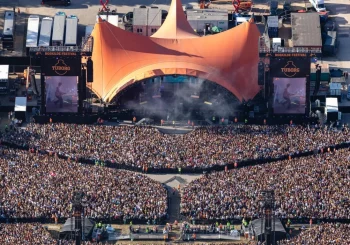Known for its various archaeological monuments, Egypt’s countless ancient tombs carry snippets of history in every corner.
Located about 560 kilometers northwest of Cairo, Siwa Oasis is home to one of the most important burial sites dating to Dynasty 26, ‘The Mountain of the Dead.’
‘The Mountain of the Dead’ contains thousands of graves cut in the bedrock, where inscriptions helped to date the oldest graves to researchers and scholars. According to the official site of the Ministry of Antiquities in Egypt, burials continued in this cemetery until the late Roman era.

The site is famous for four cemeteries in the mountain; ‘Siamun’, ‘Mesu Isis’, ‘Niperbathot’, and ‘Crocodile’. Belonging to ‘Siamun’, one has colorful depiction of a Greek landowner or merchant praying to Egyptian gods. The Ministry of Antiquities wrote on their site that the cemetery ‘Siamun’ in fact “translate the ancient Egyptian doctrine of life and afterlife.” Not only that, but the tomb walls reflect a clear fusion of Egyptian and Greek artistic styles.

‘Mesu Isis’ is another tomb whose walls are covered by paintings of blue and red cobras. The third tomb has walls with red-ink paintings across and is known as ‘Niperbathot’ cemetery. It inspired modern-day color of Siwan pottery.
The last tomb is called ‘Crocodile’ and its construction was inspired by the god Sobek’s association with one of Egypt’s most significant native animals, the crocodile. This tomb’s walls are painted in red ochre and cobalt blue- the most common colors of the ancient Egyptian gods and goddesses.
According to the description of the website of the Egyptian Tourism Authority, this landmark is one of the wonders of Siwa Oasis, which has always been characterized by its remarkable legends and stories.

It is noteworthy to mention that the discovery of the Mountain of the Dead dates back to 1944, during the Second World War, where the people of Siwa went to the mountain in order to hid when the German, British and Italian troops were fighting over this part of the desert. Along the way, they discovered the existence of the pharaonic tombs.
Local legend says that Alexander the Great might also be buried there. However, his tomb has never been found.
The Mountain, a famous touristic site today, can be accessed by car. It is recommended to go with a tour company accompanied by a travel guide as the area is not labeled.
Tourists, whose best bets are to visit between the months of October till May to avoid the heat, can purchase a ticket for EGP 40 or EGP 20, if they are students. Along with the pool of Cleoopatra, the mountain is one of the main attractions of Siwa oasis.





Comments (4)
[…] This mountain is home to thousands of graves which are cut into the bedrock giving it the name ‘Mountain of the Dead’. According to the Ministry of Antiquities in Egypt, burials continued here until the late Roman […]
[…] https://egyptianstreets.com/2019/08/15/the-mountain-of-the-dead-one-of-siwas-archealogical-landmarks… […]